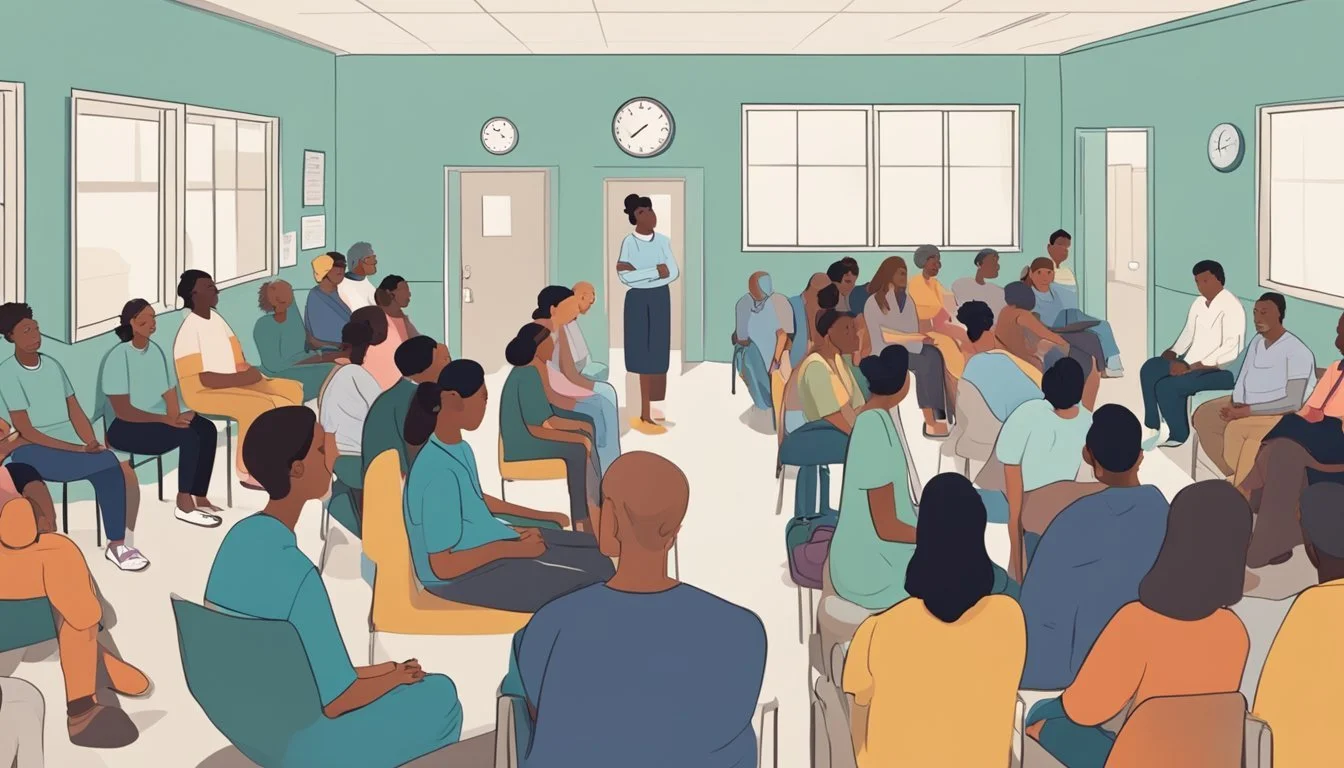Unmasking the Persistent Neglect of Post-Traumatic Stress Disorder
Post-traumatic stress disorder (PTSD) remains a significant mental health concern, yet it often goes unrecognized or misunderstood. Despite increased awareness in recent years, many individuals suffering from PTSD fail to receive proper diagnosis and treatment. PTSD is still overlooked due to its complex nature, societal stigma, and the misconception that it primarily affects military veterans.
The prevalence of PTSD extends far beyond combat-related experiences. Trauma from sexual assault, physical abuse, and other violent events can trigger this debilitating condition. Women, in particular, face a higher risk of developing PTSD, with rape being the most likely cause. This broader spectrum of trauma sources contributes to the underdiagnosis of PTSD in non-military populations.
Misconceptions about PTSD symptoms further complicate its recognition. While commonly associated with flashbacks and nightmares, PTSD can manifest in subtle ways, such as avoidance behaviors, negative thoughts, and heightened arousal. These less obvious signs often lead to misdiagnosis or dismissal of symptoms, leaving many individuals without the support they desperately need.
Understanding PTSD
Post-traumatic stress disorder (PTSD) is a complex mental health condition that can develop after exposure to severe trauma. It impacts millions of people worldwide but often goes unrecognized or misunderstood.
Defining Post-Traumatic Stress Disorder
PTSD is a psychiatric disorder that can occur in individuals who have experienced or witnessed a traumatic event. These events may include natural disasters, serious accidents, terrorist acts, war, or personal assaults.
The condition can affect anyone, regardless of age, gender, or background. PTSD disrupts daily functioning and can have long-lasting effects on a person's mental and physical well-being.
Not everyone who experiences trauma develops PTSD. The risk factors include the severity and duration of the trauma, personal history, and biological factors.
Common Symptoms and Signs
PTSD manifests through various symptoms, typically grouped into four categories:
Intrusive thoughts: Recurring, unwanted memories of the traumatic event, nightmares, or flashbacks
Avoidance: Steering clear of reminders associated with the trauma
Negative changes in mood and thinking: Persistent negative emotions, distorted beliefs about oneself or others
Changes in physical and emotional reactions: Being easily startled, always on guard, or engaging in self-destructive behavior
Symptoms usually appear within three months of the traumatic incident but can sometimes emerge years later. The intensity and duration of symptoms vary among individuals.
Distinguishing Severe Trauma from Other Stressors
While stress is a common experience, severe trauma that may lead to PTSD is distinct from everyday stressors. Traumatic events typically involve actual or threatened death, serious injury, or sexual violence.
Examples of severe trauma include:
Combat exposure
Childhood abuse
Sexual assault
Physical attack
Natural disasters
These events are sudden, intense, and often life-threatening. They overwhelm a person's ability to cope and can lead to lasting psychological impact.
Not all stressful situations result in PTSD. Job loss, divorce, or financial difficulties, while challenging, generally don't qualify as severe trauma unless accompanied by threats to life or physical integrity.
Prevalence and Demographics
PTSD affects various segments of the population differently. Certain groups face higher risks based on gender, age, and life experiences.
PTSD in Different Genders
Women experience PTSD at higher rates than men. Studies show a lifetime PTSD prevalence of 9.7% for women compared to 3.6% for men. This gender disparity is evident in both civilian and military populations.
Civilian women have an 8% lifetime prevalence rate. Military women face an even higher rate at 13.4%.
Factors contributing to higher rates in women include:
Greater likelihood of experiencing sexual trauma
Differences in coping mechanisms
Hormonal influences on stress responses
Age Factor: Adults and the Elderly
PTSD prevalence varies across age groups. Adults aged 45-49 show the highest rates at 9.2%.
Elderly individuals may face unique challenges:
Delayed onset PTSD from earlier life traumas
Increased vulnerability due to age-related cognitive changes
Potential reactivation of symptoms during later-life stressors
Early intervention and tailored treatment approaches are crucial for addressing PTSD across different age groups.
Veterans and Combat Exposure
Veterans face significantly higher PTSD rates due to combat exposure. Between 11% and 23% of veterans experience PTSD within a given year.
Combat-related factors increasing PTSD risk:
Intensity and duration of exposure to traumatic events
Multiple deployments
Witnessing death or injury of fellow service members
Post-deployment challenges can exacerbate symptoms:
Difficulty reintegrating into civilian life
Stigma surrounding mental health in military culture
Access to specialized treatment services
Targeted interventions and support systems are essential for addressing the unique needs of veterans with PTSD.
Societal and Cultural Factors
PTSD remains overlooked due to complex societal and cultural influences. These factors shape public perception, access to care, and individual experiences of trauma and recovery.
Stigma Around Mental Health
Mental health stigma persists as a significant barrier to PTSD recognition and treatment. Many societies view mental health issues as signs of weakness or personal failure. This stigma leads individuals to avoid seeking help or discussing their symptoms.
Cultural beliefs also impact how PTSD is perceived. Some cultures emphasize stoicism or discourage open expression of emotions. This can make it difficult for those suffering from PTSD to acknowledge their struggles or reach out for support.
In certain professions, such as military or emergency services, admitting to mental health challenges may be seen as detrimental to one's career. This further reinforces the tendency to overlook or minimize PTSD symptoms.
Awareness and Education Deficits
Lack of public awareness and education about PTSD contributes to its overlooked status. Many people associate PTSD solely with combat veterans, unaware that it can affect anyone who experiences trauma.
Limited understanding of PTSD symptoms can lead to misdiagnosis or dismissal of the condition. Healthcare providers may not receive adequate training to recognize and treat PTSD effectively.
Educational initiatives are crucial for improving PTSD recognition. Public campaigns and school-based programs can help raise awareness and reduce stigma. Better training for medical professionals can enhance early detection and intervention.
The Role of Media and Representation
Media portrayals of PTSD significantly influence public perception. Inaccurate or sensationalized depictions can reinforce stereotypes and misconceptions about the disorder.
Positive representation in media can help normalize discussions about PTSD. Accurate portrayals of diverse individuals living with PTSD can increase empathy and understanding.
Social media platforms offer opportunities for sharing personal experiences and accessing support networks. However, they can also spread misinformation if not moderated effectively.
Responsible journalism plays a crucial role in shaping public understanding of PTSD. Balanced reporting on research findings and treatment options can help combat misconceptions and encourage help-seeking behavior.
Diagnosis Challenges
Accurate diagnosis of PTSD remains a complex issue in the medical field. Multiple factors contribute to the difficulties healthcare professionals face when evaluating patients for this condition.
Barriers to Accurate Diagnosis
PTSD symptoms often overlap with other mental health disorders, making it challenging to distinguish. Patients may downplay or hide their symptoms due to stigma or fear of judgment. This can lead to underreporting and missed diagnoses.
Time constraints in medical settings can hinder thorough evaluations. Doctors may not have enough time to conduct comprehensive assessments, potentially overlooking crucial details.
Cultural differences and language barriers can also impede accurate diagnosis. Patients from diverse backgrounds may express symptoms differently or face challenges communicating their experiences effectively.
Differential Diagnosis
PTSD shares symptoms with several other conditions, complicating the diagnostic process. Depression, anxiety disorders, and substance abuse often co-occur with PTSD, making it difficult to isolate the primary issue.
Traumatic brain injuries can present similarly to PTSD, especially in combat veterans. Distinguishing between these conditions requires careful evaluation and specialized expertise.
Some physical health problems, such as thyroid disorders or chronic pain, can mimic PTSD symptoms. Healthcare professionals must rule out these possibilities through thorough medical examinations.
Role of Healthcare Professionals
Primary care physicians often serve as the first point of contact for individuals experiencing PTSD symptoms. These doctors need proper training to recognize potential cases and refer patients to mental health specialists.
Mental health experts, including psychiatrists and psychologists, play a crucial role in accurate PTSD diagnosis. They use structured interviews and standardized assessment tools to evaluate patients comprehensively.
Continuous education and training for healthcare professionals are essential to stay updated on the latest diagnostic criteria and assessment techniques. This helps improve the accuracy and timeliness of PTSD diagnoses.
Collaboration between different healthcare specialists can lead to more accurate diagnoses. A multidisciplinary approach involving mental health experts, neurologists, and primary care physicians can provide a more comprehensive evaluation.
Triggers and Manifestations
PTSD triggers can initiate distressing symptoms in those affected. These triggers often connect to the original traumatic event and can lead to intense emotional and physical reactions.
Identifying Traumatic Events
Traumatic events that may lead to PTSD include combat exposure, sexual assault, natural disasters, and severe accidents. Not everyone who experiences trauma develops PTSD, but certain events carry higher risks.
Rape is considered the trauma most likely to cause PTSD, with combat trauma a close second. Car accidents, physical assaults, and witnessing violent acts can also trigger the condition.
Recognizing the specific traumatic event is crucial for understanding an individual's PTSD triggers and symptoms.
Understanding Flashbacks and Triggers
Flashbacks are vivid, intrusive memories of the traumatic event. They can feel as if the person is reliving the experience in the present moment.
Triggers are stimuli that remind the person of the trauma and can spark flashbacks or other PTSD symptoms. Common triggers include:
Sights (e.g., seeing a news report of a similar incident)
Sounds (e.g., loud noises resembling gunfire)
Smells (e.g., specific scents associated with the event)
Thoughts or memories related to the trauma
Triggers vary widely among individuals and may not always be obvious.
Emotional and Physiological Responses
PTSD can cause intense emotional and physical reactions when triggered. Emotional responses may include:
Sudden fear or anxiety
Anger or irritability
Sadness or depression
Emotional numbness
Physiological reactions often accompany these emotions:
Rapid heartbeat
Sweating
Trembling
Difficulty breathing
Nausea
These responses can escalate into panic attacks in some cases. The body's fight-or-flight response activates, even when no real danger is present.
Understanding these reactions helps individuals and healthcare providers recognize PTSD symptoms and develop effective coping strategies.
Treatment and Healing Paths
Effective PTSD treatment involves a combination of therapeutic approaches, medications, and support systems. These elements work together to help individuals manage symptoms and progress towards recovery.
Therapeutic Approaches
Cognitive Behavioral Therapy (CBT) is a cornerstone of PTSD treatment. It helps patients identify and change negative thought patterns related to their trauma. Exposure therapy, a specific type of CBT, gradually exposes individuals to trauma-related memories in a safe environment.
Eye Movement Desensitization and Reprocessing (EMDR) is another evidence-based treatment. It uses bilateral stimulation to help process traumatic memories.
Group therapy provides a supportive environment where individuals can share experiences and coping strategies with others who understand their struggles.
Art therapy and mindfulness practices can complement traditional therapies, offering alternative ways to express emotions and manage stress.
Medications and Medical Interventions
Antidepressants, particularly selective serotonin reuptake inhibitors (SSRIs), are commonly prescribed for PTSD. These medications can help alleviate symptoms of depression and anxiety often associated with the disorder.
Anti-anxiety medications may be used for short-term relief of severe anxiety symptoms. However, they are typically not recommended for long-term use due to potential side effects and risk of dependence.
Beta-blockers can help manage physical symptoms of PTSD, such as rapid heartbeat and high blood pressure.
In some cases, sleep aids may be prescribed to address insomnia and nightmares, which are common in PTSD.
Importance of Support Systems
Family and friends play a crucial role in PTSD recovery. Their understanding and patience can provide a stable environment for healing.
Support groups offer a sense of community and validation. They allow individuals to connect with others who have similar experiences.
Professional support from therapists and psychiatrists is essential for ongoing treatment and adjustment of care plans.
Workplace support, such as accommodations or flexible schedules, can help individuals manage their symptoms while maintaining employment.
Community resources, including veterans' organizations or trauma survivor networks, can provide additional assistance and advocacy.
Complications and Co-Morbidities
PTSD often leads to additional mental and physical health challenges. These complications can significantly impact an individual's quality of life and treatment outcomes.
PTSD and Associated Conditions
PTSD frequently coexists with other psychiatric disorders. Depression is the most common co-occurring condition, affecting a large percentage of PTSD patients. Anxiety disorders, substance abuse, and even psychotic symptoms can also emerge alongside PTSD.
These comorbidities can complicate diagnosis and treatment. For example, substance abuse may mask PTSD symptoms or interfere with therapy. Anxiety disorders can amplify hypervigilance and avoidance behaviors characteristic of PTSD.
Early recognition of comorbid conditions is crucial. Proper identification allows for more comprehensive treatment plans, potentially reducing the chronicity and severity of both PTSD and associated disorders.
From Anger to Depression
Anger and depression are prevalent emotional states in individuals with PTSD. Anger often stems from heightened arousal and irritability associated with the disorder. It can manifest as outbursts, aggression, or self-destructive behaviors.
Depression in PTSD patients may result from persistent negative thoughts, feelings of detachment, or loss of interest in previously enjoyed activities. This combination of anger and depression can lead to:
Social isolation
Relationship difficulties
Occupational problems
Increased risk of suicide
Treatment approaches for PTSD must address these emotional complications to achieve better outcomes and improve overall functioning.
Physical Health and PTSD
PTSD doesn't just affect mental health; it can also have profound impacts on physical well-being. Individuals with PTSD often experience:
Chronic pain
Cardiovascular problems
Gastrointestinal issues
Sleep disturbances
The constant state of hyperarousal in PTSD can lead to elevated stress hormones, potentially causing long-term health issues. Additionally, PTSD sufferers may engage in risky behaviors or neglect self-care, further compromising their physical health.
Addressing these physical complications is essential for comprehensive PTSD treatment. Integrating medical care with psychological interventions can lead to improved overall health outcomes for individuals with PTSD.
Coping Strategies and Prevention
Effective coping strategies and preventive measures play a crucial role in managing and reducing the impact of PTSD. These approaches encompass individual techniques, early interventions, and educational initiatives.
Coping Mechanisms for Managing PTSD
Individuals with PTSD can employ various coping mechanisms to manage symptoms. Mindfulness meditation helps reduce anxiety and improve emotional regulation. Deep breathing exercises can alleviate stress and promote relaxation.
Cognitive restructuring techniques assist in reframing negative thoughts and beliefs associated with trauma. This approach aids in developing a more balanced perspective on past events.
Physical exercise releases endorphins, enhancing mood and reducing stress. Activities like yoga combine physical movement with mindfulness, offering dual benefits for PTSD management.
Support groups provide a safe space for sharing experiences and learning from others facing similar challenges. These groups foster a sense of community and reduce feelings of isolation.
Prevention of PTSD Post-Trauma
Early intervention is key in preventing PTSD development after traumatic events. Critical incident stress debriefing, conducted shortly after trauma exposure, can help process emotions and reduce risk.
Psychological first aid offers immediate support to trauma survivors, addressing basic needs and providing emotional comfort. This approach aims to stabilize individuals and promote resilience.
Cognitive-behavioral therapy (CBT) administered soon after trauma can be effective in preventing PTSD onset. CBT helps individuals process traumatic memories and develop healthy coping strategies.
Medication, such as beta-blockers, may be prescribed in some cases to reduce the physiological stress response and potentially prevent PTSD development.
Role of Education in Prevention
Education plays a vital role in PTSD prevention and management. Public awareness campaigns help reduce stigma and encourage early intervention.
Training programs for first responders and healthcare professionals improve trauma-informed care practices. These initiatives enhance the ability to identify and support individuals at risk of developing PTSD.
School-based programs teach resilience skills to children and adolescents, equipping them with tools to cope with potential traumatic experiences. These programs often include stress management techniques and emotional regulation strategies.
Workplace education initiatives raise awareness about occupational trauma risks and promote supportive environments. Such programs can lead to improved policies and resources for employees exposed to traumatic events.
Living with PTSD
PTSD profoundly impacts daily functioning, relationships, and long-term outlook. Individuals face unique challenges in managing symptoms and rebuilding their lives.
Daily Life and Functioning
PTSD disrupts routine activities and responsibilities. Sufferers may struggle with concentration, memory, and decision-making. Sleep disturbances are common, leading to fatigue and irritability.
Hypervigilance can make simple tasks like grocery shopping overwhelming. Some individuals isolate themselves to avoid triggers.
Work performance often suffers due to anxiety and difficulty focusing. Many find it hard to maintain regular schedules or meet deadlines.
Coping strategies like mindfulness and structured routines can help manage symptoms. Professional support is crucial for developing effective tools to navigate daily challenges.
Relationships and Social Interactions
PTSD strains personal connections. Trust issues and emotional numbness can create barriers in intimacy. Mood swings and anger outbursts may push loved ones away.
Social situations become daunting. Large crowds or unfamiliar environments can trigger anxiety or panic attacks. Many withdraw from friends and activities they once enjoyed.
Communication difficulties arise as individuals struggle to express their experiences. Misunderstandings are common, leading to feelings of isolation.
Support groups offer safe spaces to connect with others facing similar challenges. Family therapy can improve understanding and strengthen relationships.
Long-Term Management and Outlook
Recovery from PTSD is possible with proper treatment and support. Therapy approaches like cognitive-behavioral therapy (CBT) and eye movement desensitization and reprocessing (EMDR) show promising results.
Medication may help manage symptoms like anxiety and depression. Combining pharmacological and psychological treatments often yields the best outcomes.
Self-care practices are essential. Regular exercise, healthy eating, and stress-reduction techniques contribute to overall well-being.
Building resilience is key to long-term management. Developing coping skills and a strong support network improves the ability to handle future challenges.
While symptoms may persist, many individuals learn to lead fulfilling lives. Ongoing therapy and support groups provide valuable resources for continued healing and growth.
Institutional Support and Resources
Dedicated organizations and government agencies play a crucial role in addressing PTSD. These institutions provide vital resources, shape policies, and work to improve access to mental health services for those affected by trauma.
National Center for PTSD and Other Organizations
The National Center for PTSD, established by the U.S. Department of Veterans Affairs, leads efforts in research, education, and treatment of PTSD. It offers comprehensive resources for patients, families, and healthcare providers. The center conducts cutting-edge studies on trauma and its effects.
Other notable organizations include the Anxiety and Depression Association of America and the International Society for Traumatic Stress Studies. These groups provide education, support networks, and treatment referrals.
Many non-profit organizations focus on specific populations affected by PTSD, such as veterans, first responders, or survivors of sexual assault.
Government Policies and Veterans Affairs
The U.S. Department of Veterans Affairs (VA) plays a central role in PTSD care for military personnel and veterans. VA hospitals and clinics offer specialized PTSD treatment programs.
Recent policy changes have expanded eligibility for PTSD-related benefits and services. The VA now recognizes a wider range of traumatic experiences as potential causes of PTSD.
Efforts to improve screening and early intervention for PTSD in military and veteran populations have increased. The VA has implemented evidence-based treatments and training programs for healthcare providers.
Access to Mental Health Services
Despite progress, barriers to accessing PTSD treatment persist. Rural areas often lack specialized mental health providers. Wait times for appointments can be lengthy in some regions.
Telemedicine and mobile apps have emerged as innovative solutions to improve access. These tools allow patients to connect with therapists remotely and access self-help resources.
Insurance coverage for PTSD treatment has improved, but some patients still face high out-of-pocket costs. Efforts to achieve parity in mental health coverage continue.
Community mental health centers and non-profit clinics help fill gaps in care, especially for underserved populations. These organizations often offer sliding scale fees based on income.






